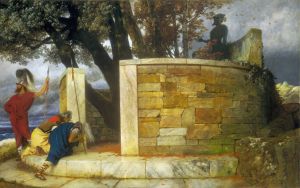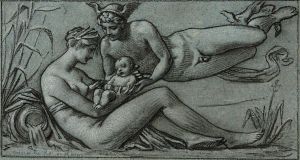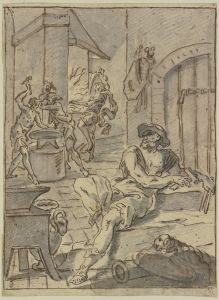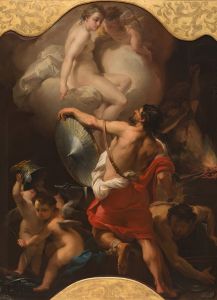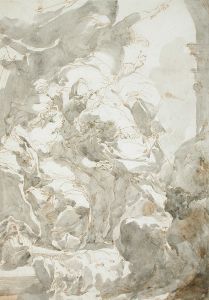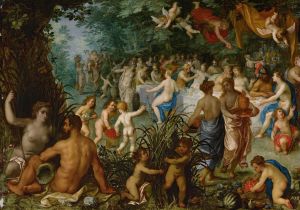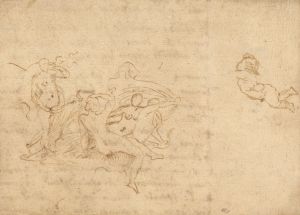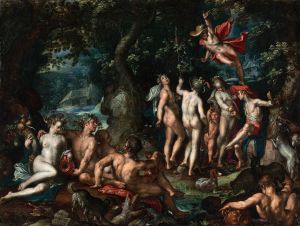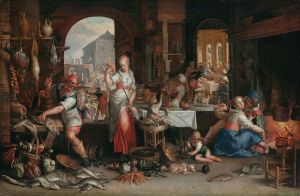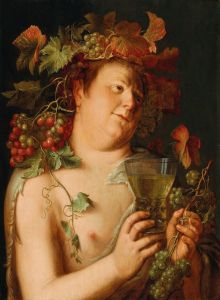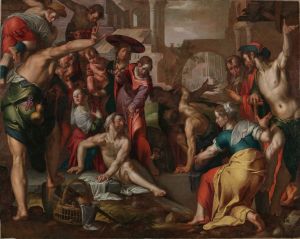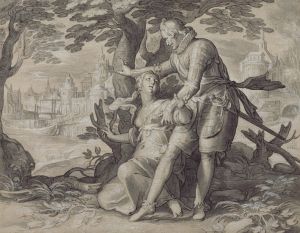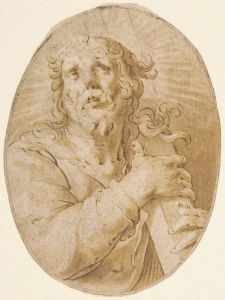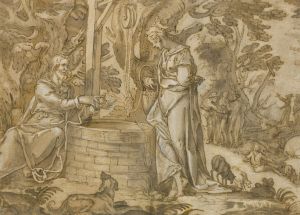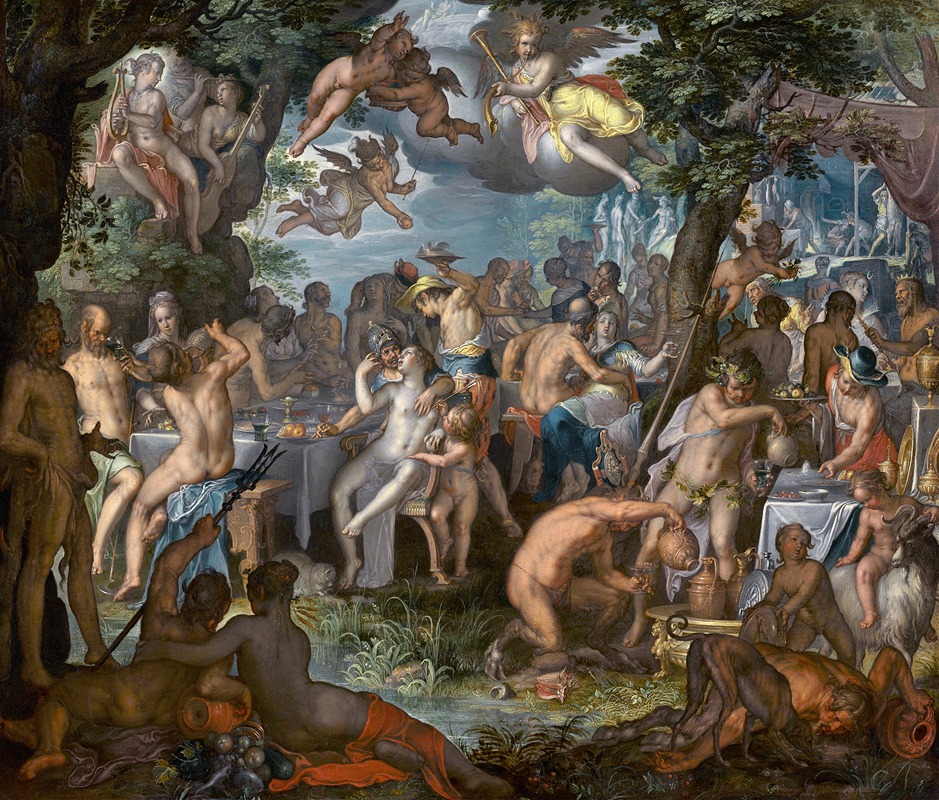
The Wedding of Peleus and Thetis
A hand-painted replica of Joachim Wtewael’s masterpiece The Wedding of Peleus and Thetis, meticulously crafted by professional artists to capture the true essence of the original. Each piece is created with museum-quality canvas and rare mineral pigments, carefully painted by experienced artists with delicate brushstrokes and rich, layered colors to perfectly recreate the texture of the original artwork. Unlike machine-printed reproductions, this hand-painted version brings the painting to life, infused with the artist’s emotions and skill in every stroke. Whether for personal collection or home decoration, it instantly elevates the artistic atmosphere of any space.
Joachim Wtewael's painting The Wedding of Peleus and Thetis is a notable example of Dutch Mannerist art from the early 17th century. Created in 1612, the painting depicts the mythological wedding feast of Peleus, a mortal hero, and Thetis, a sea nymph, as described in ancient Greek mythology. This event is significant in classical mythology as it ultimately led to the Trojan War, following the infamous "Judgment of Paris" that arose from the golden apple of discord introduced by the goddess Eris.
The painting is characterized by Wtewael's intricate composition and vibrant use of color, hallmarks of the Mannerist style. The scene is densely populated with figures, showcasing the artist's skill in rendering dynamic poses and interactions. Gods, goddesses, and mythological beings are depicted in a celebratory atmosphere, with lavish details emphasizing the opulence of the event. The inclusion of Eris, the goddess of discord, holding the golden apple, foreshadows the chaos that will ensue from this seemingly joyous occasion.
Wtewael's work is also notable for its meticulous attention to detail and the use of oil on copper, a medium that allowed for the creation of highly refined and luminous surfaces. The painting demonstrates the artist's mastery of small-scale works, which were highly prized during the Dutch Golden Age. The composition reflects the influence of Italian Mannerism, particularly in its elongated figures and complex spatial arrangements, while also incorporating Northern European traditions of detailed realism.
Currently, The Wedding of Peleus and Thetis is housed in the Louvre Museum in Paris, where it is part of the museum's extensive collection of European paintings. The work is celebrated for its artistic and historical significance, offering insight into the cultural and artistic milieu of the early 17th century.
Joachim Wtewael (1566–1638) was a prominent Dutch painter known for his Mannerist style and his ability to blend mythological themes with intricate detail. His works often feature vivid colors, elaborate compositions, and a sense of theatricality, making him one of the leading figures of Dutch Mannerism. The Wedding of Peleus and Thetis stands as a testament to his artistic achievements and his engagement with classical mythology.





